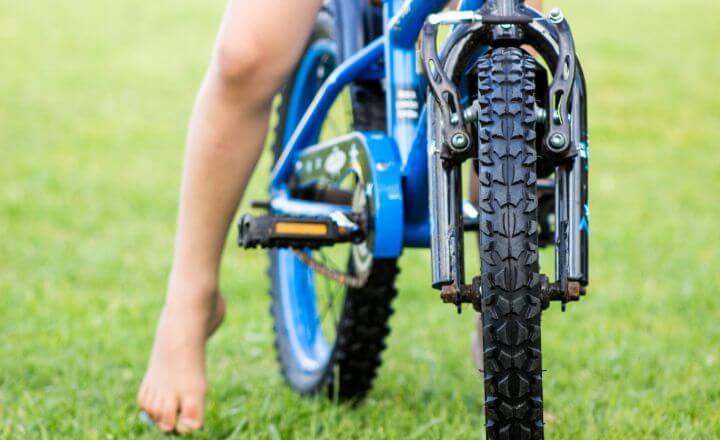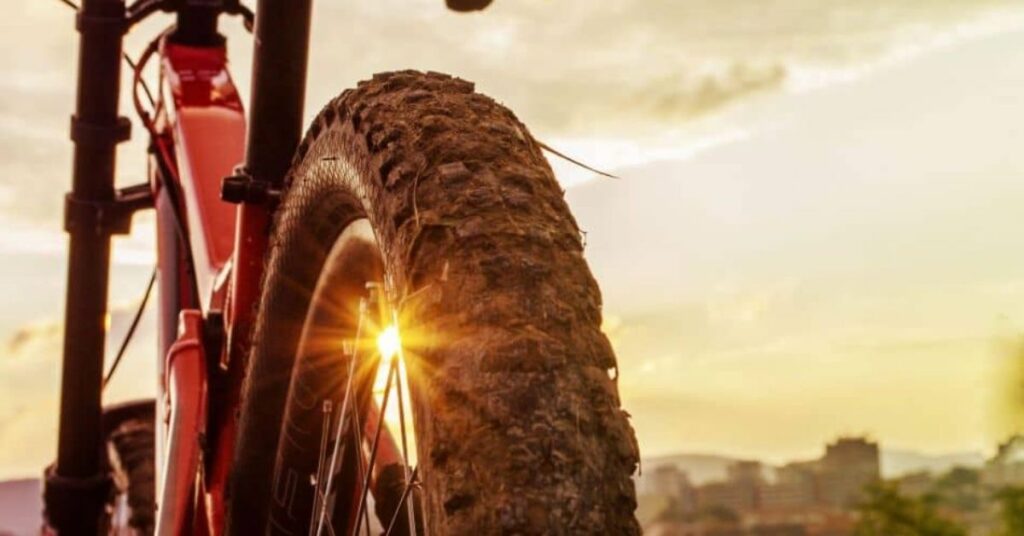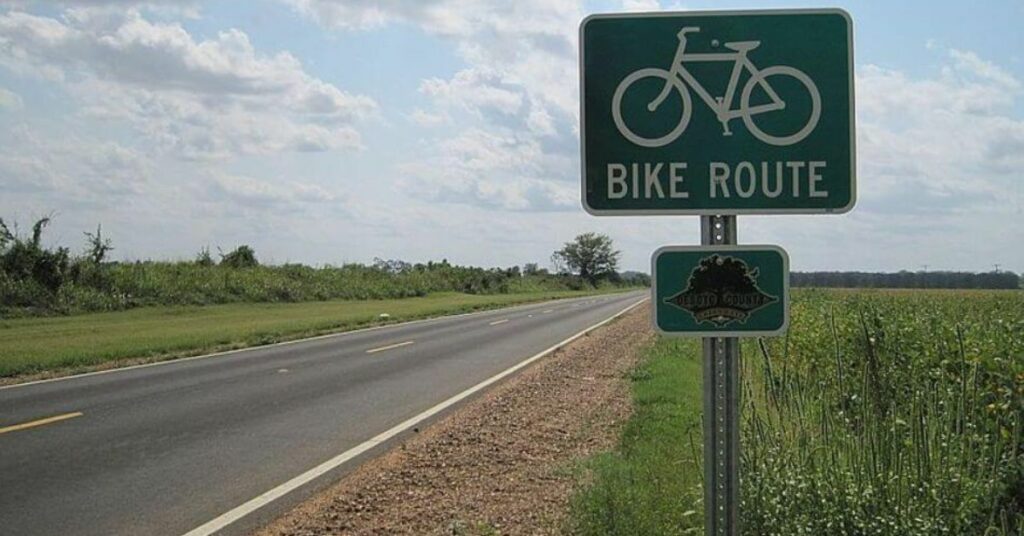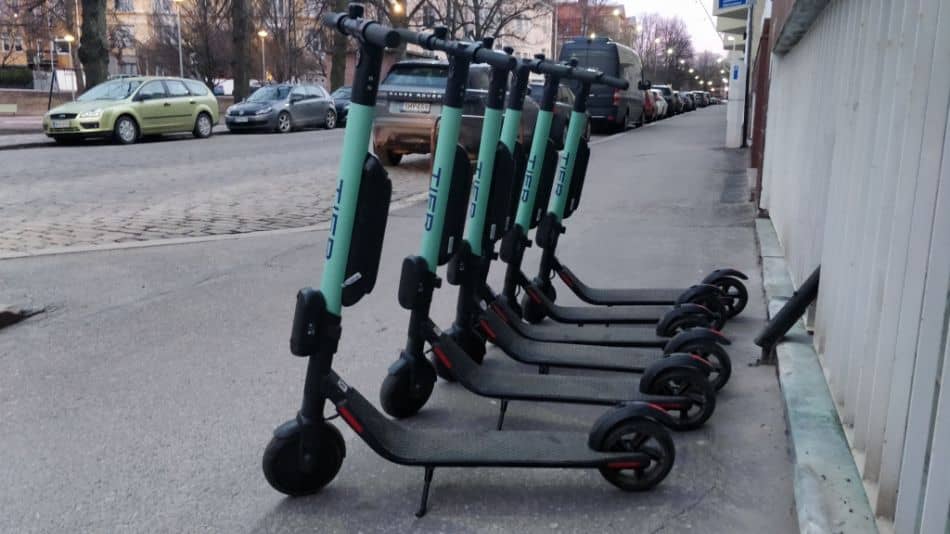(Last updated on April 14th, 2023)
Pumping your tires to the correct pressure is one of the easiest ways to boost your bike’s performance— and it’s free! Not all tires require the same amount of air, however, so you’ll need to locate the range listed on the side of your tire. In this brief guide, I break down how to determine what should bike tire pressure be on your bike and share tips for proper tire maintenance.
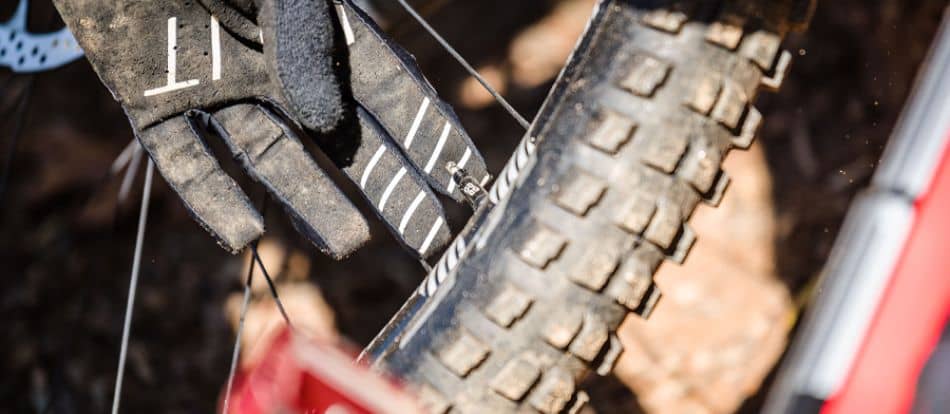
Locating Your Tires’ Recommended PSI
Having trouble finding your tire’s recommended pressure? Luckily, the answer is right under your nose— literally! Most tires list the suggested pressure directly on the sidewall, where it’s either printed on or embossed into the rubber.
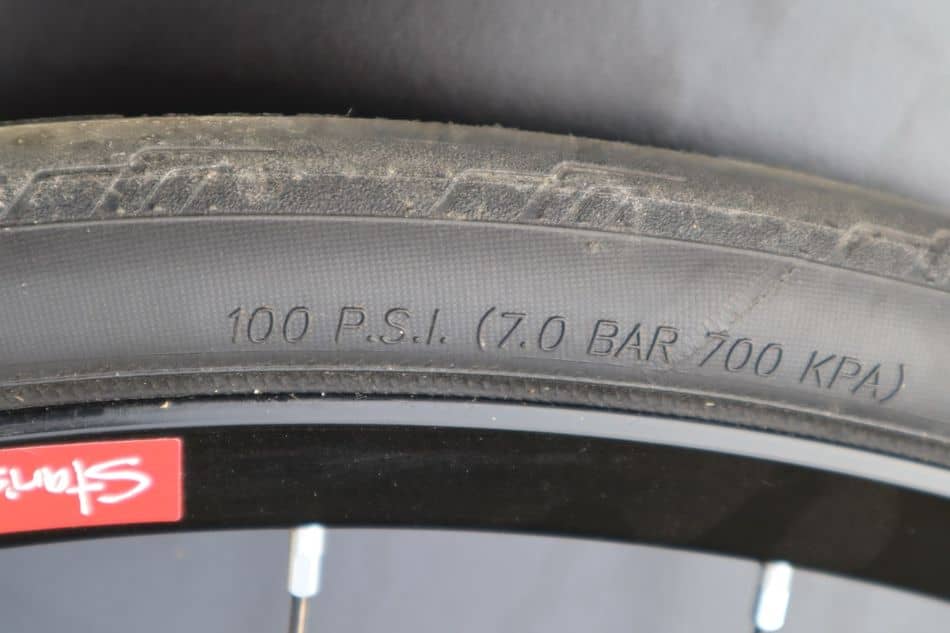
Here’s How to Find Out What Should Bike Tire Pressure be:
- Search along the side of your tires for a pair of numbers followed by “PSI”— this stands for “pounds per square inch” and is how tire pressure is measured. For example, road bike tire pressure may read “80-120 PSI”.
- If you still can’t find the PSI rating, don’t give up quite just yet. Printed numbers can rub off over time, and embossed characters can be difficult to see against the black rubber.
- Use your phone’s flashlight for better visibility and check both sides of the tire— the PSI rating will be somewhere there.
Now that you know the tire’s recommended pressure is listed directly on the bike, you’ll never have to recheck the web! Even if you swap tires, you can quickly read the PSI rating on the new set of rubber. If you want to learn more about the topic, check out our latest mountain bike tire pressure article.
Why Do Bike Tire Pressures Vary?
Suggested bike tire pressures vary for several reasons, including bike type, rider weight, terrain, and weather. PSI for road bike tires is much higher than mountain bike tires because harder tires roll faster over paved surfaces. Lower pressures offer more traction and control in difficult off-road terrain.
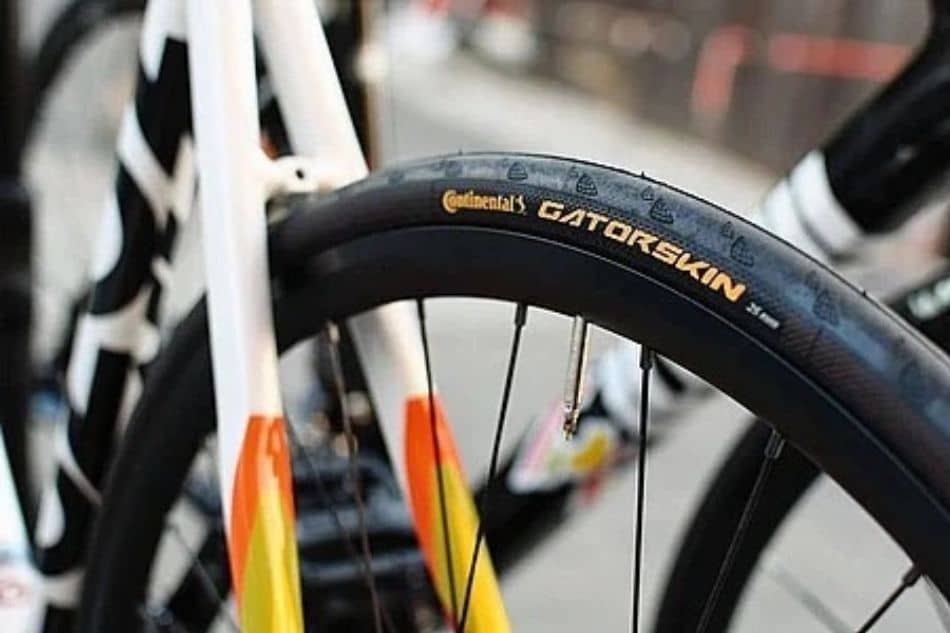
It’s always a good idea to follow the manufacturer’s recommendation to get the most performance from your tires. Different tire sizes and constructions can influence the recommended tire pressure, as some compounds may be designed to be run at higher or lower pressure.
Looking to buy new tires? Check out our guide to choosing bike tires and the step-by-step process of changing a bike tire.
As a general rule of thumb, I’ve included a chart of common tire pressures based on bike type and tire width. This will get you off on the right foot but double-check the rating listed on your own tires.
Suggested Tire Pressure by Bike Type
| Bike Type | Tire Width | Recommended Tire PSI |
| Kids’ bike | 12-24” (wheel size) | 20 to 40 PSI |
| Mountain bike | 2.1-2.5” | 25 to 50 PSI |
| Fat bike | 3.8-4.8” | 10 to 30 PSI |
| Hybrid bike | 32-42mm | 50 to 70 PSI |
| Gravel bike | 32-45mm | 20 to 50 PSI |
| Road bike | 25-28mm | 80 to 120 PSI |
Note
Remember that the tire pressure chart above is only a starting point. I’ve shown general data that is appropriate for most tires, but it’s always best to defer to the specific PSI range listed on the sidewall of your tires. Tire pressure can also be adjusted according to rider weight, expected terrain, and riding conditions.
Time to Pump!
Once you know your tires’ ideal PSI range, you have to fill them with air. The quickest way to inflate your tires is with a floor pump— this will save you time compared to a portable, handheld bike pump.
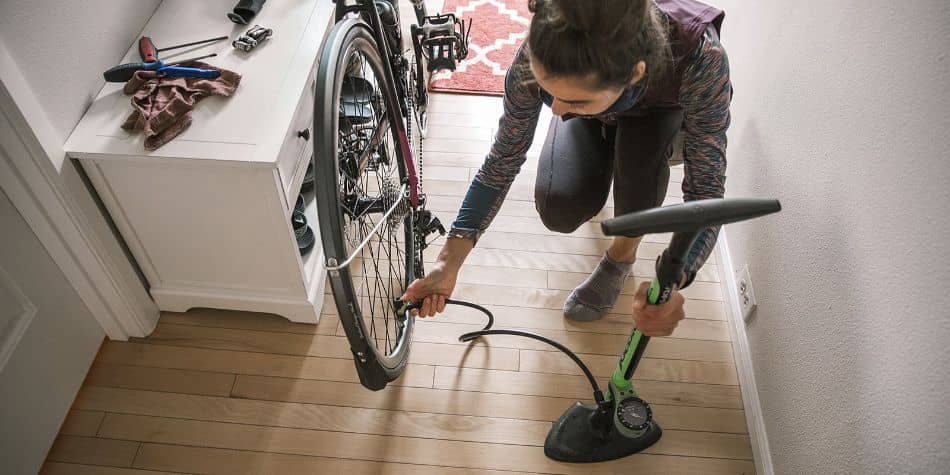
Most floor pumps have a built-in gauge, but it’s worth noting that these gauges can report incorrect pressure by up to 15 PSI. Floor pumps are also compatible with Presta and Schrader valves, the two main types of inner tube valves. Portable pumps will require more effort and a bit of effort to swap out the attachments to match the valve type.
Pro Tip
I travel frequently and always try to save space with my ever-growing bike equipment. Therefore, my go-to pump is a portable design with a small integrated gauge to know exactly what PSI I am at. It’s a little too big to fit in my jersey pocket on a ride, but it doesn’t take up any floor space in my house.
Check Your Bike Tire Pressure Regularly
It’s one thing to inflate your tires to the right pressure and another thing to maintain proper PSI on every ride regularly. Inner tubes will slowly lose air and decrease PSI, especially when the weather changes. Changes in temperature and humidity can also affect tire pressure, as the air inside the tire expands and contracts with temperature changes.
There’s no need to inflate your tires every day but keep an eye on them over the course of the week, topping them off every 4-5 days or so. This is when I employ the squeeze test that’s, of course, not as accurate as a pressure gauge but can give me a clue into whether or not I need to fill up my tires.
Fine-tune Your Tire Pressure
One of the most important moments to check your tire pressure is while you ride. This way, you can receive live-time feedback on your bike’s performance with the current PSI. If the pressure is too low, you may notice sluggish handling or so much squish that you hit your rim on obstacles. Too high, and you could lose out on grip and shock absorption.
Play around with your tire pressure and find what works for you and your riding type. Road bike racers are famous for wanting the highest bike tire PSI to ride fast over pavement, but recent science has shown the sweet spot of rolling resistance is somewhere in the middle. Watch GCN’s video on what is the fastest tire pressure for road bikes!
Mountain bikers are also tire pressure geeks attempting to hone in on the perfect pressure. Low pressure helps boost traction and grip while riding through tough terrain and tight corners, but too little air can damage the rims. New tech like the Quarq TyreWiz sensor lets riders monitors their tire pressure in real time out on the trails.
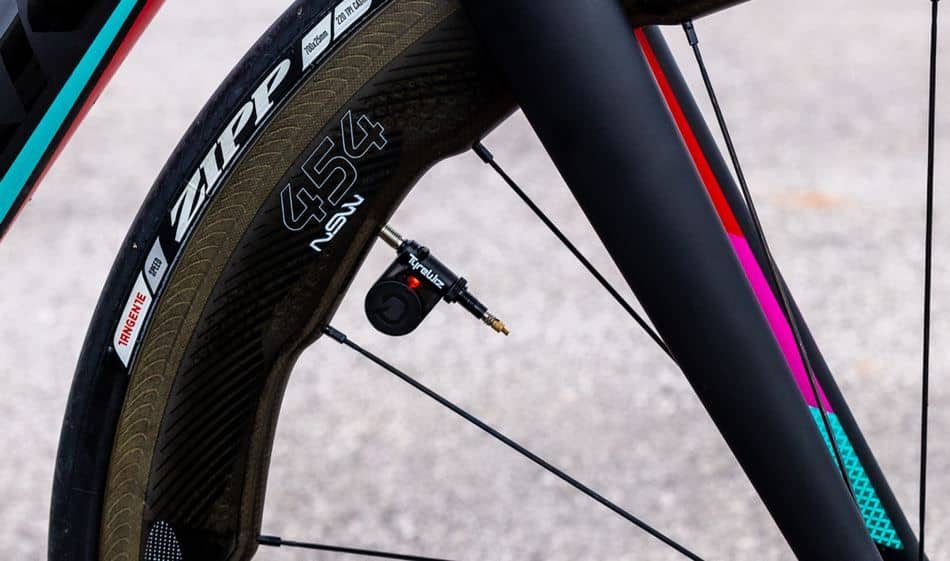
If you’re looking for a new mountain bike, browse our picks for the best fat tire mountain bikes and full-suspension MTBs under $2,000!
Conclusion
Bicycle tire pressure is an important aspect of every ride, and it’s easy to get right. When in doubt, look at your tire’s sidewall to confirm the PSI range appropriate for your set of tires. I recommend investing in a pump to ensure your bike is ready to ride whenever you head out.
If you liked this article, you might also like:
- How Much Air Should Be In A Bike Tire: All You Need To Know
- How To Measure Bike Tire Size: A Complete Guide (2023)
- How To Repair A Bike Yourself: A Step-By-Step Guide
Frequently Asked Questions
The recommended air pressure for a bike tire varies depending on the bike type, the rider’s weight, and the terrain being ridden. Generally, the rougher the terrain, the lower the pressure. Look at the sidewall of your tires for the specific PSI range appropriate for the tires.
Recommended tire pressure depends on the specific tire model on your bike. Many mountain bike tires should be pumped up to 25-50 PSI. Road tires are firmer and take between 80-120 PSI, while gravel tires are around 40-80 PSI.
As a rule of thumb, most 26-inch bike tires require a tire pressure between 30-50 PSI (pounds per square inch). Check the manufacturer’s recommendations, often printed on the tire’s sidewall, to determine the appropriate pressure range for your specific tire.
Bike tires always list the recommended pressure on the edge of the tire’s sidewall— either printed or embossed directly into the rubber. It’s typically a range of PSI (pounds per square inch). Squeezing your tire can give you a rough idea, but you’ll need a pressure gauge to know for sure.
Bike tire pressure is the highest on road bikes, rated for between 80-120 PSI. A higher tire pressure can reduce the tire’s rolling resistance, making it easier to pedal and increasing overall efficiency over smooth surfaces.
Bike tires should be checked for proper inflation regularly, ideally before each ride. Factors such as temperature, humidity, and riding conditions can cause tire pressure to fluctuate. If you ride your bike daily, you can pump up your tires every 4-5 days.
Have more questions about bicycle tire pressure? Leave a comment below!

Jeffrey Brown is a writer, editor, and professional bike mechanic with over 7 years of experience working in full-service and community-based bike shops. As a bicycle educator, he has supported youth programs across the US that teach bike mechanics and life skills to prepare the next generation of cyclists.
Jeffrey began his professional mechanic career at his university bike co-op, so he recognizes the grassroots power of the cycling community. Initially self-trained as a mechanic, his subsequent positions as manager and lead educator gave him official training. He has won various awards and grants for his role as a bicycle and environmental advocate.

